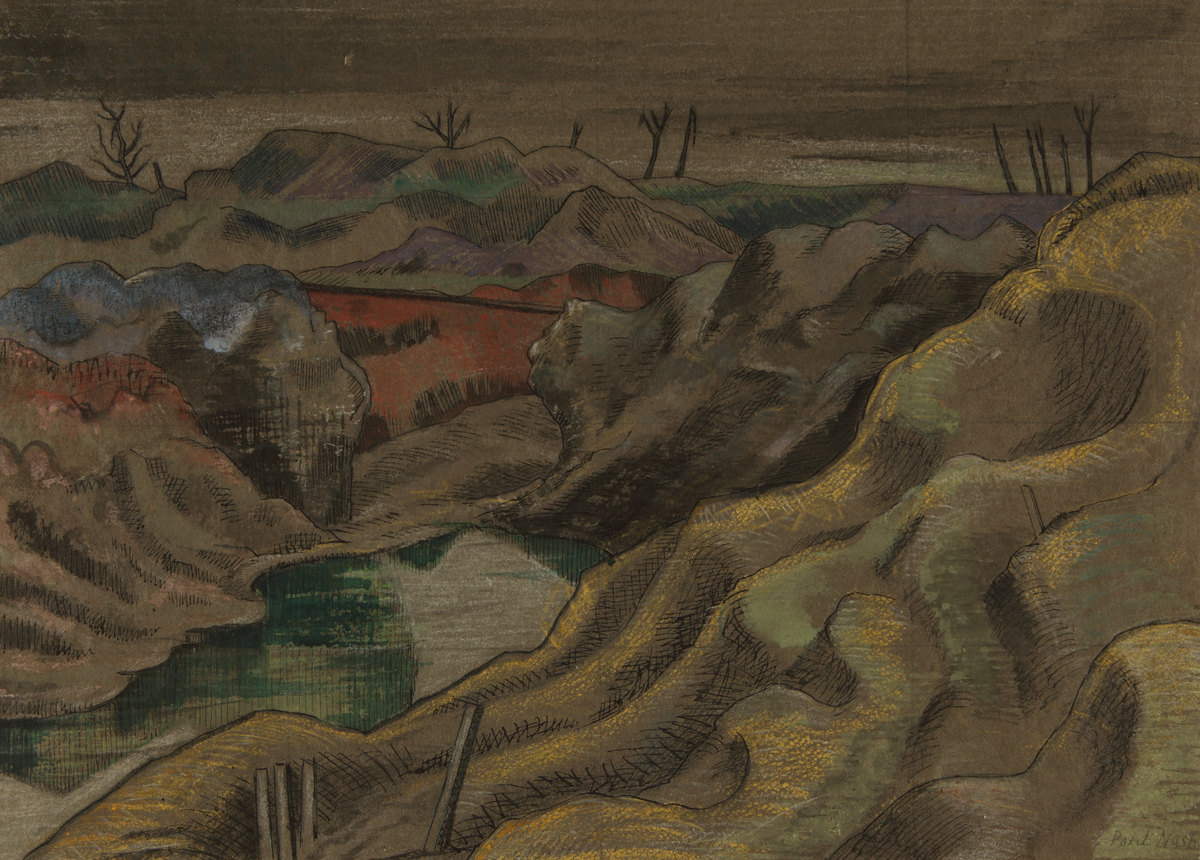The Landscape: Hill 60
Summary
A barren and rocky landscape. In the foreground is an uneven slope, descending from the upper right corner down to the lower left of the composition; immediately beyond is a crater filled with green water. The lifeless landscape of small hillocks and pools stretches into the horizon, along which is dotted a line of blasted trees. The scene is depicted in predominantly grey tones. Hill 60, South East of Ypres, was the site of a battle on 17/04/1915. On the German front line, it was a prelude to the second battle for Ypres. Four Victoria crosses were won on the day of the battle. It was named Hill 60 because it is 60 miles above sea level.
Display Label
The Sensory War 1914-2014 11 October 2014 – 22 February 2015. The Sensory War 1914-2014 marks the centenary of the beginning of the First World War and explores how artists have communicated the impact of war on the body, mind, environment and human senses across the subsequent century. The First World War involved a profound re-configuration of sensory experience and perception through the invention of devastating military technologies which destroyed human beings and altered the environment beyond recognition. Its legacy has continued and evolved through even more radical forms of destruction over the last hundred years. Some of the most profound and moving works of art of the last century were created by artists who experienced the horrors of the war and the trenches at first hand. They struggled to create ways of making meaning out of the sights and sounds that shocked their senses as the world around them was transformed into a living hell. Since that first technological war, artists have followed in their footsteps making powerful personal visions of the conflicts that have happened since. This exhibition brings together their responses across a wide range of media from painting to video. Manchester Art Gallery has a nationally important collection of art of the First World War assembled by its first director, Lawrence Haward. Taking this rich collection as the starting point the exhibition explores thematically the responses of these artists to the sensory effects of warfare. The Sensory War 1914-2014 is part of The First World War Centenary Programme, which has been co-ordinated by the Imperial War Museum, London to commemorate the First World War in galleries and museums across the country. Supported by Ian Simpson and Rachel Haugh, First TransPennine Express, The Austin and Hope Pilkington Trust, the Western Front Association and a generous group of donors from the Friends of Manchester Art Gallery who have financially supported the exhibition. Curated by Dr Ana Carden-Coyne, Co-director, Centre for the cultural history of War at the University of Manchester, David Morris, the Whitworth and Tim Wilcox, Manchester Art Gallery (MAG, MCC, WW1 Centenary logos) The exhibition begins on this floor and continues on the second floor
Object Name
The Landscape: Hill 60
Creators Name
Date Created
1917
Dimensions
support: 25.9cm x 35.2cm
accession number
1920.78
Collection Group
Place of creation
Zillebeke
Support
paper
Medium
watercolour
ink
chalk
pencil
Catalogue Raisonne
Andrew Causey, Paul Nash, Oxford, 1980
Legal
© transferred to MCGs from the War Artists Advisory Committee, Ministry of Information (1947)

